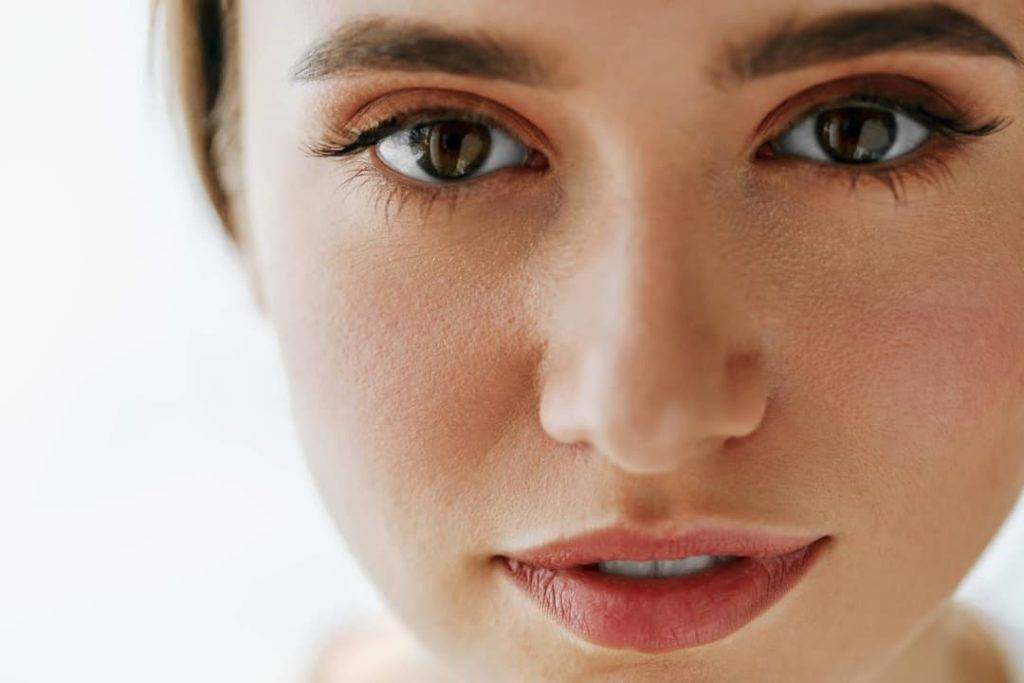Have you ever pondered over the intriguing phenomenon of different eye colors? It's fascinating how some individuals possess mesmerizing blue eyes, while others boast captivating shades of brown or green. The color of our eyes is a result of an intricate interplay between genetics, pigmentation, and environmental elements.
Undoubtedly, eye color stands out as one of the most prominent physical attributes, but have you ever delved into the reasons behind this mesmerizing diversity? In this article, we will unravel the scientific aspects behind eye color and delve into the various factors contributing to this fascinating trait.
Genetics plays a pivotal role in defining our eye color. The iris, which is the colored part of our eye, contains pigments that determine the color. There are two primary pigments responsible for eye color: eumelanin, which is brown or black, and pheomelanin, which is red or yellow.
The quantity and type of pigments present in the iris are determined by multiple genes, and the most influential of these genes is known as the OCA2 gene. This gene provides instructions for the production and storage of melanin in the iris. Other genes also contribute to regulating the production and type of melanin.
Similar to various physical traits, eye color is inherited from our parents. The combination of genes inherited from our parents determines the color of our eyes. Although the inheritance pattern of eye color is complex, there are several factors that influence its outcome.
For instance, brown eyes dominate over blue eyes in terms of inheritance. This implies that if one parent possesses brown eyes and the other has blue, the child is more likely to have brown eyes. However, exceptions exist, and numerous cases display eye colors that don't match either parent's.
While genetics takes the spotlight in determining eye color, environmental factors can also exert their influence. Sunlight exposure can alter the amount and type of melanin in the iris, leading to changes in eye color. Individuals residing in regions with higher sun exposure often have darker eyes compared to those in areas with less sunlight.
Age also contributes to the development of eye color. Babies are typically born with blue or gray eyes, which can transform as they mature. This metamorphosis occurs as the quantity and type of melanin in the iris undergo changes during the initial years of life.
To summarize, eye color emerges as an intricate outcome of genetics and environmental factors. While genetics takes precedence in determining eye color, other influential aspects exist. Gaining insights into the scientific realm of eye color enables us to value the diversity within our physical characteristics and the complexities within our genetic makeup.

Eric Johnson is a Kerala-based eye wear expert and entrepreneur. He is one of the directors of Ejones Opticals, a company dedicated to providing the highest quality eye wear products at the most affordable prices. Eric has been in the eye wear business for over 10 years, and has a deep understanding of the industry. He is passionate about helping people look and feel their best through the right eye wear. Eric is committed to using his expertise to create stylish and functional eye wear that is tailored to each individual's needs.
As we age, our eyes undergo several changes that can affect our vision. One of these changes is presbyopia, a common condition that affects people over the age of 40. Understanding what presbyopia is and how it affects your vision is important to maintaining good eye health and quality of life.
Presbyopia is a condition that occurs when the natural lens of the eye becomes less flexible and loses its ability to focus on objects up close. This happens because of age-related changes in the eye, which lead to a gradual loss of elasticity in the lens.
The Prevalence of Presbyopia Presbyopia is a natural part of the aging process, and as such, it affects a large percentage of the population. According to the World Health Organization (WHO), presbyopia affects nearly 1.8 billion people worldwide, and this number is expected to increase to 2.1 billion by 2020.
Age-related changes in the eye are the primary cause of presbyopia. Other factors that may contribute to the development of presbyopia include environmental factors such as prolonged exposure to UV rays and genetics.
The most common symptoms of presbyopia include blurred vision, eye strain, and difficulty reading small print. People with presbyopia may also experience headaches, fatigue, and eye fatigue.
Presbyopia is usually diagnosed during a comprehensive eye exam. The exam may include a visual acuity test, refraction test, and an eye health evaluation.
There are several treatment options available for presbyopia, including eyeglasses, contact lenses, surgery, and lifestyle changes. Eyeglasses and contact lenses are the most common treatment options and can help correct the refractive error caused by presbyopia.
Surgery is another option for treating presbyopia, with options such as laser surgery and intraocular lens implants. Lifestyle changes such as eating a healthy diet, maintaining regular eye exams, and protecting your eyes from the sun can also help prevent or manage presbyopia.
While it is not possible to prevent presbyopia entirely, there are steps that people can take to reduce their risk of developing the condition. These include maintaining a healthy diet, getting regular eye exams, and wearing proper eye protection when exposed to UV rays.
Presbyopia is a common condition that affects many people as they age. Understanding the causes and symptoms of presbyopia is essential for maintaining good eye health and quality of life. If you are experiencing symptoms of presbyopia, seek treatment from an eye care professional to help manage the condition and maintain good vision.

Eric Johnson is a Kerala-based eye wear expert and entrepreneur. He is one of the directors of Ejones Opticals, a company dedicated to providing the highest quality eye wear products at the most affordable prices. Eric has been in the eye wear business for over 10 years, and has a deep understanding of the industry. He is passionate about helping people look and feel their best through the right eye wear. Eric is committed to using his expertise to create stylish and functional eye wear that is tailored to each individual's needs.
It is often believed that loss of eyesight is an inevitable part of aging, but the truth is that a healthy
lifestyle can significantly reduce your chances of that happening.

There are certain habits that you can include in your diet and lifestyle that are simple, but effective, for eye health. We have listed a few important ones which you can make a part of your life immediately.
A healthy diet is always the number one best practice for anything that has to do with your body, chances are you already have one.
Great, keep going!
But you might want to think about the kind of nutrients that would help maintain and boost your eyesight.
The most popular advice, you might already know about it, is Carrots and Vitamin E.
The pigment that gives carrots its red-orange colour, beta carotene, is also great for your eyes. Your body would convert it to another essential nutrient, Vitamin A.
Similarly a lot of nutrients are pigment-based and people are encouraged to have colourful fruits and veggies to promote overall health, from your leafy-green vegetables like spinach to deep yellow mangoes.
Omega-3 fattys are great too, and an excellent source for those would be tuna, salmon and other fatty fish.
Exercise regularly to make sure these nutrients are distributed throughout your body well!
The recommendations are to not stare at a screen for more than 20-minutes, but that may be a bit hard for us to remember.
The root issues here are the constant exposure to blue light from the screen and that we tend to blink much less when we are staring which causes a lot of strain to our eyes.
There are a couple of ways to tackle this issue:
Especially in the dark, when the lights are out and you’re in bed staring at your phone. The intensity of exposure is enough to disrupt quality sleep.
Quality sleep is your body’s way of doing maintenance on itself and that includes your eyes.
People often struggle with poor eyesight for a long time before they realize it, which impacts their quality of life a good chunk of time.
Make it a habit to get your eyes tested once in a while, it won’t cost much and can save you a lot of trouble down the line.
This is especially true for young children. Both parents and children may be frustrated with why school he/she haven’t been doing well lately, only realizing that they may need glasses much later on.
Eye exams can also spot diseases early-on and give you the necessary instructions and care as to how to avoid them. Eye diseases like glaucoma will not show symptoms.
Here’s what most eye exams look like:
Now that you’re more aware of the safety of your eyes, you might have further queries that need to be answered or you may have already detected a problem with your eyes’ health.
Do get in touch with one of our specialists, let us help you out.

Eric Johnson is a Kerala-based eye wear expert and entrepreneur. He is one of the directors of Ejones Opticals, a company dedicated to providing the highest quality eye wear products at the most affordable prices. Eric has been in the eye wear business for over 10 years, and has a deep understanding of the industry. He is passionate about helping people look and feel their best through the right eye wear. Eric is committed to using his expertise to create stylish and functional eye wear that is tailored to each individual's needs.
Address: Unity Complex, Payyanur.
Tele: +91 4985205553
Mobile: +91 8921835063
Address: KSRTC Complex, Payyanur
Tele: 04985203554
Mobile: +91 8848195859